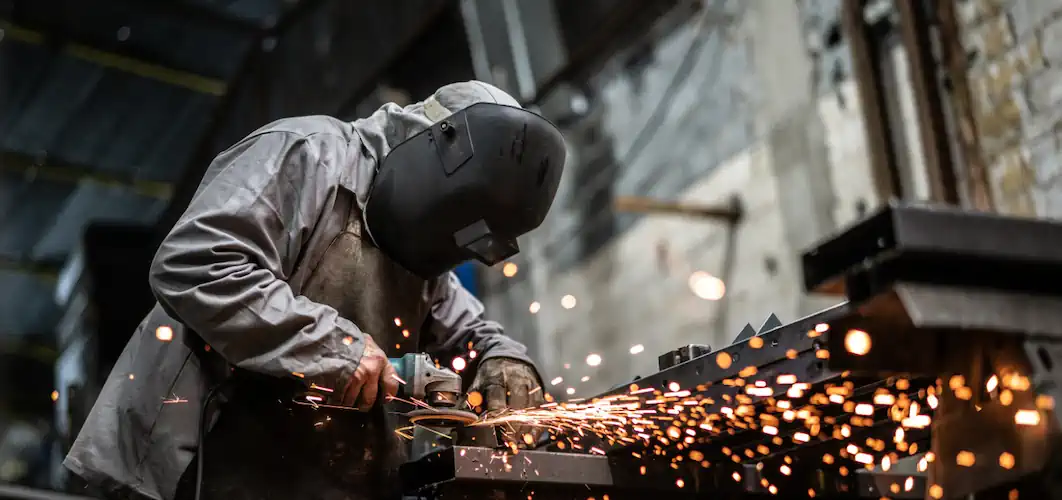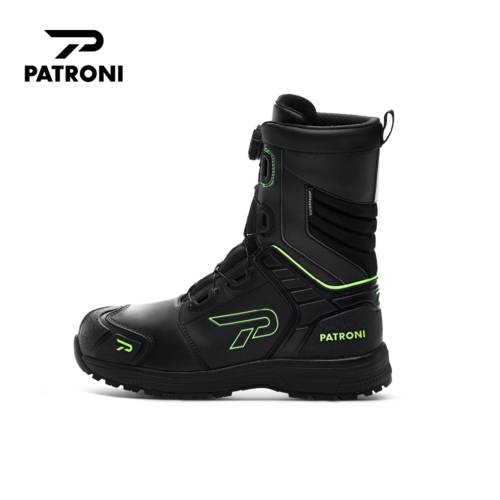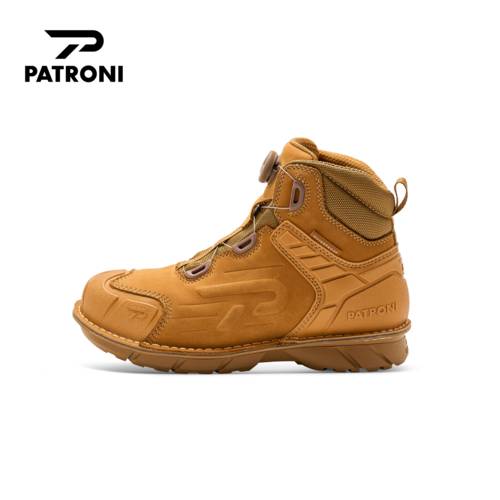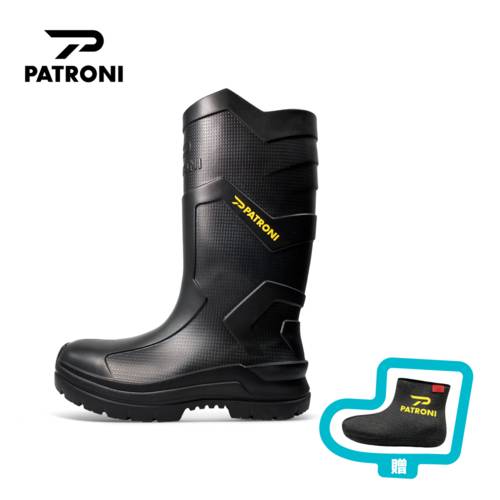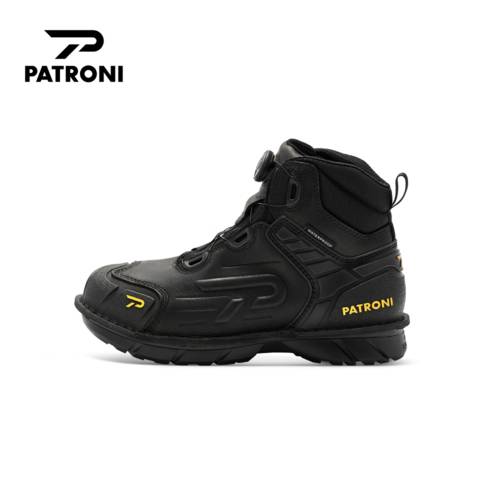The Advantages of
Cut-Resistant Aprons
In today's fast-paced and demanding work environments, the safety and well-being of employees should always be a top priority. Cut-resistant aprons, provide durable and protective materials, offering a vital layer of defense against potential injuries, ensuring workers can carry out their tasks with confidence and peace of mind.
Continue reading to explore how cut-resistant aprons are transforming workplaces and the industrial safety market against worker injuries from sharp.
Understanding The Importance Of Worker Safety
Worker safety is a fundamental aspect of any successful organization. When employees feel safe and protected, they are more likely to be engaged, motivated, and productive. On the other hand, a lack of safety measures can lead to accidents, injuries, and a decline in overall productivity.
According to the Occupational Safety and Health Administration (OSHA), workplaces that prioritize safety have lower injury rates, higher job satisfaction, and increased productivity. Employers must recognize the importance of creating a safe work environment and taking proactive measures to ensure the well-being of their employees.
One of the most common types of injuries in various industries is cuts and lacerations. These injuries can occur due to contact with sharp objects or machinery, and they can have severe consequences for workers. This is where cut-resistant aprons come in as crucial protective gear.

The Role Of Cut-Resistant Aprons In Workplace Safety
Cut-resistant aprons are designed to provide a protective layer that can withstand cuts from knives, broken glass, or other sharp materials commonly found in industries like metal casting, manufacturing, and construction.
One of the key features of cut-resistant aprons is their ability to minimize the severity of injuries. While accidents can still happen, the presence of a cut-resistant apron can significantly reduce the risk of deep cuts or lacerations that may require stitches or even surgical intervention. This not only protects workers' physical well-being but also minimizes the potential impact on productivity due to time off work for medical treatment and recovery.
Advantages Of Using Cut-Resistant Aprons
Injury Prevention
By providing a protective layer against sharp objects, cut-resistant aprons significantly reduce the risk of cuts and lacerations. This, in turn, minimizes the chances of workers experiencing severe injuries that could lead to medical treatment, time off work, or long-term disabilities.
Enhanced Productivity
When workers feel safe and protected, they are more likely to perform their tasks with increased efficiency and focus. Cut-resistant aprons create a sense of security, allowing employees to concentrate on their work without the constant worry of potential injuries. This enhanced focus translates into improved productivity and quality of work.
Cost Savings
Investing in cut-resistant aprons can result in long-term cost savings for employers. By preventing injuries, organizations can avoid the expenses associated with medical treatment, workers' compensation claims, and potential legal liabilities.
Additionally, reduced downtime due to injuries means uninterrupted workflow and maximum utilization of human resources, leading to increased profitability.
Employee Morale And Retention
A workplace that prioritizes employee safety demonstrates a genuine concern for its workers' well-being. This, in turn, boosts employee morale and job satisfaction. Workplaces experience increased productivity, engagement, and commitment from their workforce when the employees feel valued and protected.
This positive work environment also contributes to higher employee retention rates, reducing recruitment and training costs for the company.

Types Of Materials Used In Cut-Resistant Aprons
Aramid Fiber
Aramid fiber is a popular material used in cut-resistant aprons due to its high tensile strength and excellent resistance to cuts and abrasions. This synthetic fiber is lightweight, comfortable, and offers exceptional protection against sharp objects. Aramid-based aprons are commonly used in industries such as manufacturing, construction, and glass handling, as well as in molten metal PPE for foundries.
Stainless Steel Mesh
Stainless steel mesh aprons are highly durable and provide excellent cut resistance. They are ideal for industries where workers are exposed to high-velocity cutting tools or sharp objects, such as meat processing, butcheries, and fishing. Stainless steel mesh aprons offer superior protection while allowing for breathability and flexibility.
High-Density Polyethylene (HDPE)
High-Density Polyethylene aprons are known for their exceptional cut resistance and durability. This material is lightweight and provides comfort, making it suitable for industries where workers need to perform tasks that require a high level of dexterity and mobility, such as food processing, woodworking, and automotive manufacturing.
Polyurethane (PU) Coated Aprons
Polyurethane-coated aprons provide a combination of cut resistance and chemical resistance. They are commonly used in industries where workers are exposed to both sharp objects and chemicals, such as laboratories, food processing, and pharmaceutical manufacturing. PU-coated aprons offer protection against cuts, abrasions, and certain chemicals, ensuring worker safety in diverse environments.
Nitrile Coated Aprons
Nitrile-coated aprons are specifically designed to resist cuts and punctures, making them suitable for industries where workers handle sharp objects or machinery. This material offers excellent grip and dexterity, ensuring workers can perform their tasks effectively. Nitrile-coated aprons are commonly used in industries such as automotive manufacturing, metal fabrication, and construction.
Proper Care And Maintenance Of Cut-Resistant Aprons
Regular Inspection
Regularly inspect the aprons for any signs of damage or wear. Check for frayed edges, cuts, or holes that may compromise the integrity of the apron. Replace any damaged aprons promptly to maintain the highest level of protection.
Cleaning
Follow the manufacturer's guidelines for cleaning the aprons. Most cut-resistant aprons can be cleaned using warm water and mild detergent. Avoid using harsh chemicals or bleach, as they may degrade the material and reduce the apron's effectiveness. Allow the aprons to dry completely before storing or reusing them.
Proper Storage
Store the aprons in a clean and dry area to prevent moisture, mold, or mildew growth. Avoid storing them in direct sunlight, as prolonged exposure to UV rays can degrade the material over time. Proper storage ensures that the aprons remain in good condition and ready for use whenever needed.
Regular Replacement
Cut-resistant aprons have a limited lifespan, and their effectiveness diminishes over time. Regularly assess the condition of the aprons and order to replenish stock. Follow the manufacturer's recommendations for the expected lifespan of the aprons and ensure timely replacements to maintain optimal safety.
By following these care and maintenance practices, you can extend the lifespan of cut-resistant aprons and ensure their continued effectiveness in protecting your workers.

Industry Regulations And Standards For Cut-Resistant Aprons
Occupational Safety And Health Administration
OSHA sets and enforces standards to ensure safe and healthy working conditions for employees in the United States. While OSHA does not have specific regulations solely dedicated to cut-resistant aprons, it mandates employers to provide appropriate equipment and PPE for steel mills workers who are frequently exposed to hazards like risk of cuts and lacerations.
European Standards
In Europe, the European Standards (EN) outline specific requirements for personal protective equipment, including cut-resistant aprons. EN 388 is the European standard that assesses the performance of protective gloves and clothing against mechanical risks, including cut resistance. Compliance with EN 388 ensures that cut-resistant aprons meet the necessary safety standards.
National Institute For Occupational Safety And Health (NIOSH)
NIOSH is a federal agency in the United States that conducts research and provides recommendations on occupational safety and health. While NIOSH does not have specific regulations for cut-resistant aprons, it offers guidance and resources for employers to choose appropriate protective equipment, including cut-resistant clothing, based on the specific hazards present in the workplace.
Final Thoughts On Advantages Of Cut Resistant Aprons
As industries continue to evolve, the role of protective gear becomes increasingly crucial, and cut-resistant aprons stand as a testament to innovation in addressing occupational hazards in metal casting. By integrating these aprons into everyday work practices, employers not only mitigate risks but also cultivate an environment where employees feel valued and protected.
FAQ
-
What is a cut-resistant apron?
Cut-resistant aprons are designed to withstand high-performance cuts from sharp objects, minimizing the injuries of the users.
-
Why do we wear cut-resistant aprons?
Cut-resistant aprons protect the wearer from injuries like abrasions, lacerations, and punctures from sharp cutting tools, common within the food industry, manufacturing, and glasswork industry.
-
What material is used within cut-resistant aprons?
Durable cut-resistant aprons are made of woven fabrics of stainless steel, Aramid, and more to offer advanced puncture protection due to the high quality of the materials and superior strength.




